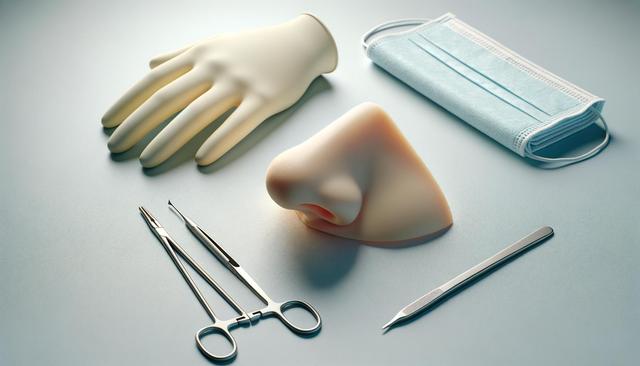What Is Rhinoplasty and Who Is It For?
Rhinoplasty, often referred to as a nose job, is a surgical procedure that modifies the shape or function of the nose. It is commonly sought by individuals wishing to enhance their facial harmony or address breathing difficulties caused by structural issues. Candidates for rhinoplasty include those with congenital nasal deformities, injuries that have altered the nose’s shape, or functional impairments like a deviated septum. Beyond aesthetics, many people explore types of nose surgery to breathe better, making functional rhinoplasty a valuable medical option.
This procedure appeals to a wide range of people, often including:
- Individuals with breathing problems due to nasal obstruction
- Those unhappy with the size, shape, or symmetry of their nose
- People who have suffered nasal trauma from accidents or sports injuries
- Patients with birth defects or congenital nasal abnormalities
Rhinoplasty is tailored to the unique needs of each patient. Whether the goal is cosmetic enhancement or improved nasal function, consulting with experienced professionals is essential in determining the right approach.
Types of Rhinoplasty Procedures
There are several types of rhinoplasty procedures, each designed to address specific needs. Understanding the differences helps patients make informed decisions. The main categories include open rhinoplasty, closed rhinoplasty, functional rhinoplasty, and revision rhinoplasty.
Here’s a breakdown of common types:
- Open Rhinoplasty: Involves an incision across the columella, allowing full access to nasal structures. It’s often used for complex reshaping.
- Closed Rhinoplasty: All incisions are made inside the nostrils. This is less invasive and typically has a shorter recovery period.
- Functional Rhinoplasty: Aimed at correcting internal nasal structures to improve breathing. Commonly chosen by individuals researching types of nose surgery to breathe better.
- Revision Rhinoplasty: Performed to correct or refine results from a previous rhinoplasty.
The choice of procedure depends on the patient’s anatomy, goals, and whether the surgery is elective or medically necessary. An experienced surgeon will guide patients through these options to determine the most appropriate method.
Finding the Right Surgeon
Choosing a qualified and experienced surgeon is one of the most important steps in the rhinoplasty journey. The search for the best rhinoplasty surgeons near you should involve thorough research, patient reviews, and face-to-face consultations. Credentials, board certification, and a portfolio of before-and-after photos can offer valuable insights into a surgeon’s capabilities.
When evaluating potential surgeons, consider the following:
- Board certification and specialized training in facial plastic surgery
- Years of experience specifically with rhinoplasty procedures
- Access to a modern, accredited surgical facility
- Willingness to discuss risks, expectations, and recovery in detail
Consultations allow patients to ask questions, express concerns, and understand what the procedure entails. It’s also an opportunity to assess whether the surgeon’s approach aligns with the patient’s goals. Trust and communication are key elements of a successful surgical outcome.
Cost Considerations and What to Expect
Rhinoplasty cost varies significantly based on factors such as surgeon experience, geographic location, the complexity of the procedure, and whether the surgery is functional or cosmetic. On average, patients can expect rhinoplasty cost to include surgeon fees, anesthesia, facility costs, and post-operative care.
Here are some elements that affect the overall rhinoplasty cost:
- Surgeon’s expertise and reputation
- Location and facility fees
- Pre-operative tests and medical evaluations
- Post-surgery medications and follow-up visits
Insurance may cover part or all of the procedure if it is deemed medically necessary, such as surgeries addressing breathing issues. However, cosmetic rhinoplasty is typically not covered. It’s essential to clarify coverage, payment plans, and financing options during initial consultations.
Patients should also be prepared for recovery time and potential side effects. Swelling, bruising, and temporary changes in sensation are common but usually subside within a few weeks. Full results can take up to a year to become fully visible as the nose heals and settles into its new shape.
Recovery and Results
The recovery period following rhinoplasty requires patience and care. While most people return to normal activities within two weeks, complete healing can take several months. Adhering to post-operative instructions is crucial for optimal outcomes and minimizing complications.
Typical recovery milestones include:
- First week: Splint removal and reduction in swelling
- Two weeks: Most bruising and noticeable swelling subsides
- One to three months: Gradual improvement in nasal contour
- Up to 12 months: Final shape and refinement become apparent
During recovery, patients are advised to avoid strenuous activity, heavy lifting, and wearing glasses that rest on the nose. Follow-up appointments help track progress and address any concerns. Communication with the surgical team during this time ensures a smooth and safe healing process.
Long-term results can be very rewarding, especially when the surgery improves both appearance and function. Whether chosen for cosmetic reasons or to explore types of nose surgery to breathe better, rhinoplasty can enhance confidence and overall quality of life.




Leave a Reply